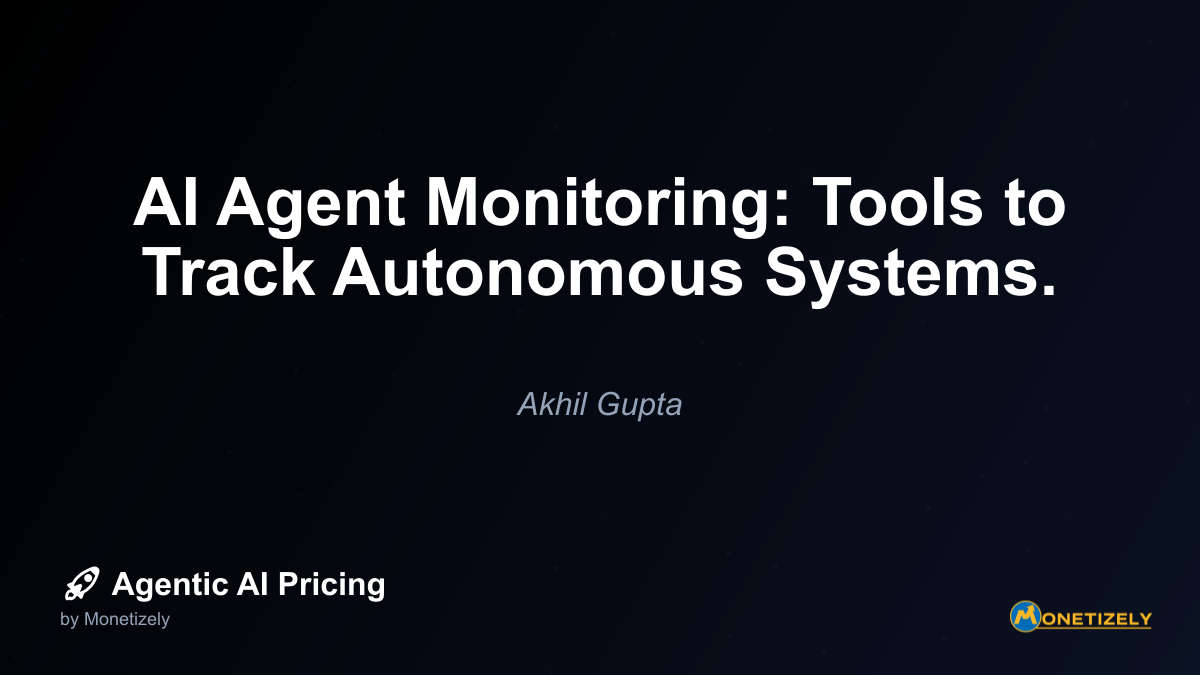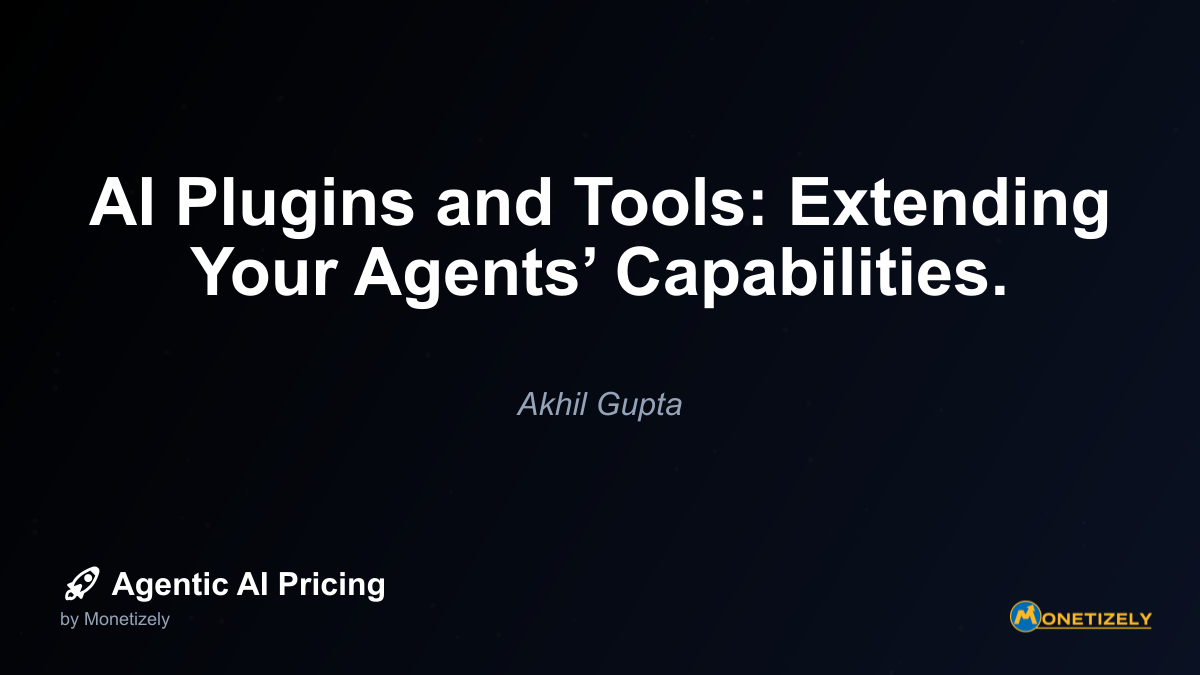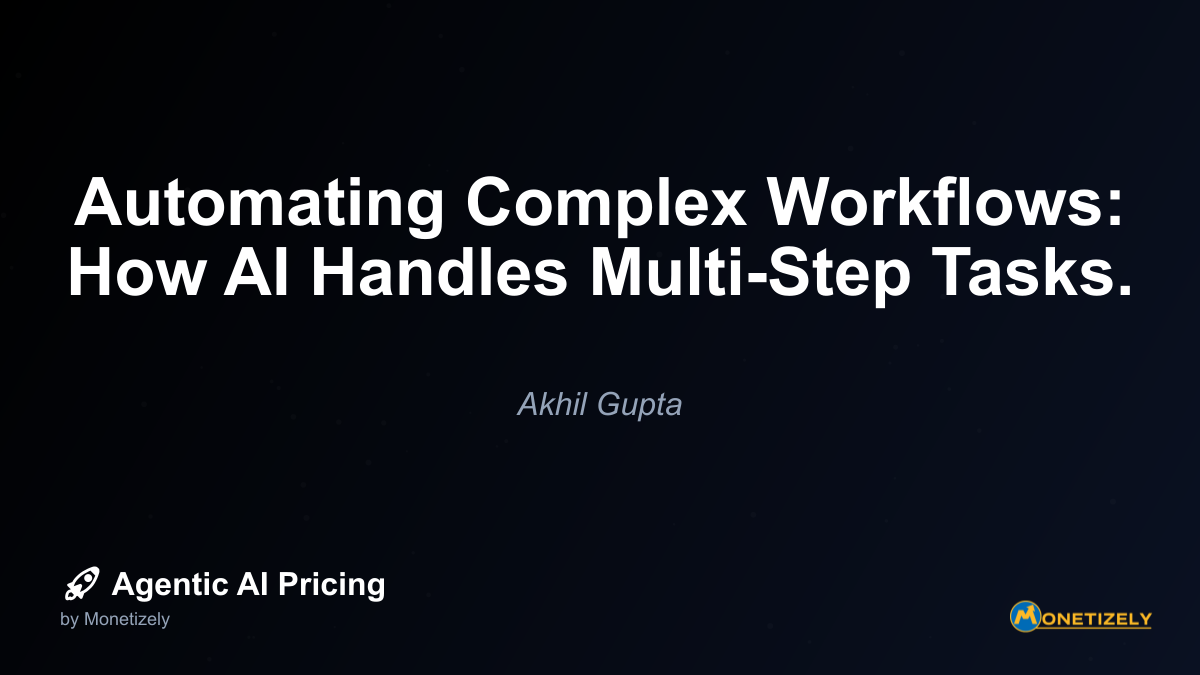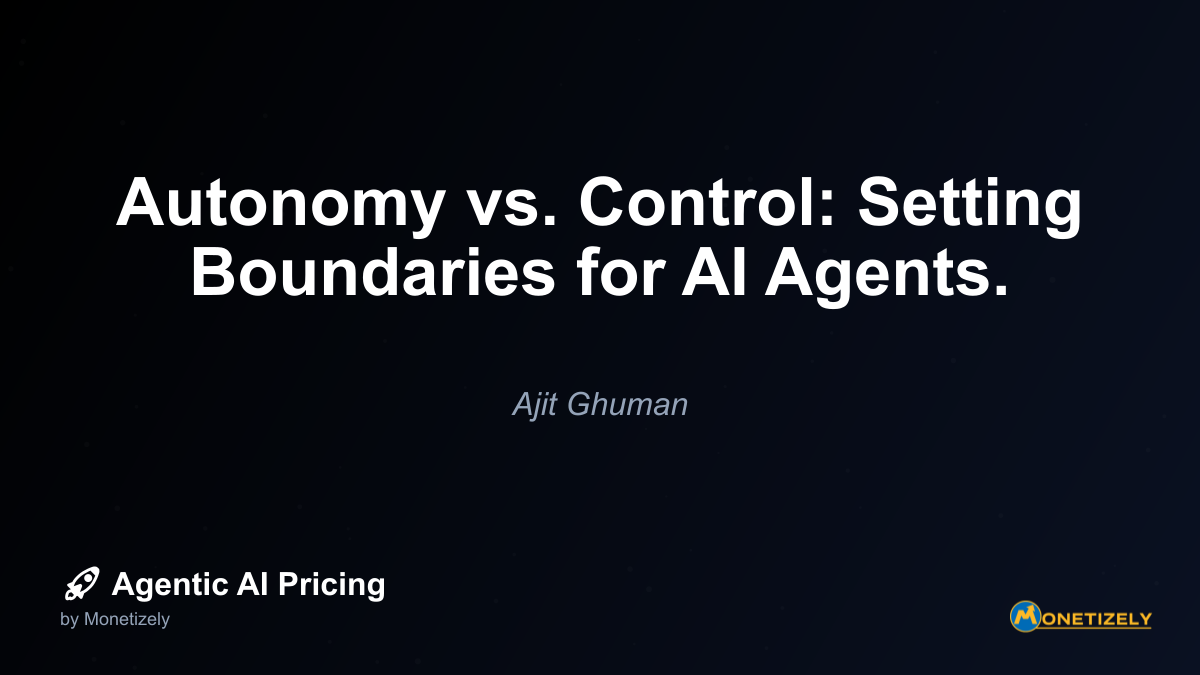· Ajit Ghuman · Technical Insights · 6 min read
Model Upgrades: Navigating Improvements and Version Changes.
AI and SaaS Pricing Masterclass
Learn the art of strategic pricing directly from industry experts. Our comprehensive course provides frameworks and methodologies for optimizing your pricing strategy in the evolving AI landscape. Earn a professional certification that can be imported directly to your LinkedIn profile.
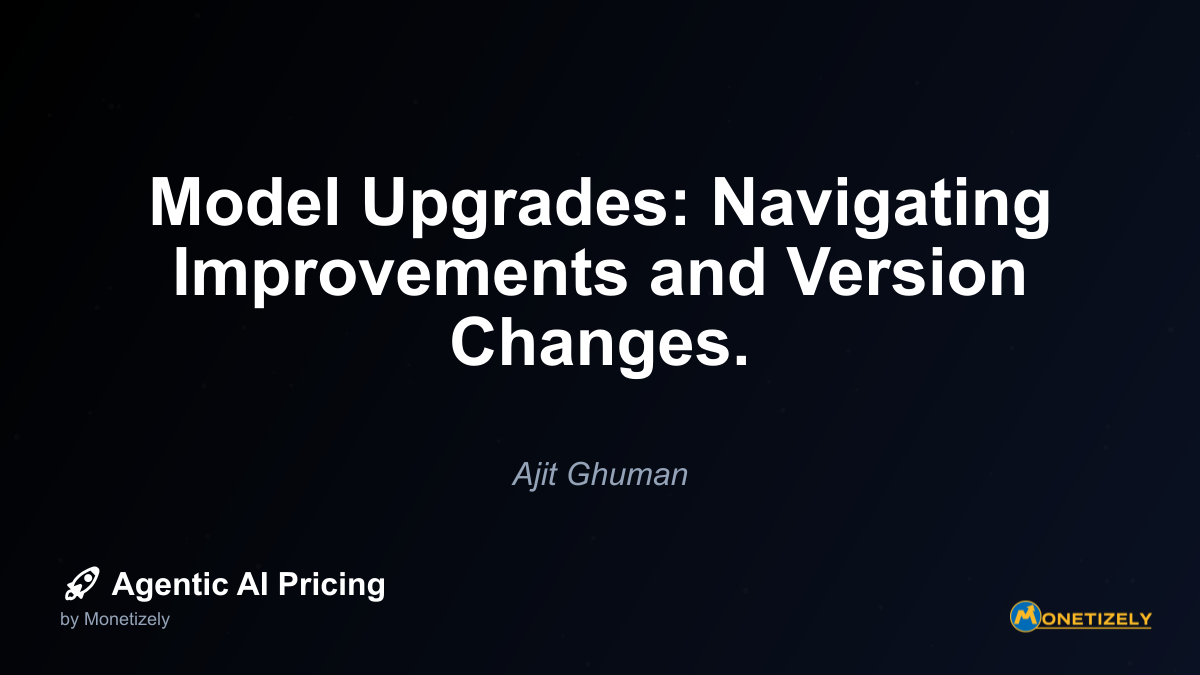
Ensuring Compatibility and Minimizing Disruption
Model upgrades often introduce compatibility challenges that must be systematically addressed to prevent operational disruptions. These challenges typically manifest in several key areas:
API Integration Adjustments
When providers update models, they frequently modify their APIs in ways that require adaptation:
- Parameter changes - New options, deprecated fields, or modified defaults
- Response format evolution - Structural changes in returned data
- Authentication updates - Security enhancements and credential management
- Rate limiting adjustments - Changes to throughput restrictions
- Error handling modifications - New error codes or reporting mechanisms
To minimize disruption, implement:
- API abstraction layers - Create intermediary services that normalize interactions between your systems and the model provider
- Graceful degradation - Design systems to function (albeit with reduced capabilities) when API changes occur
- Comprehensive logging - Maintain detailed interaction records to troubleshoot unexpected behaviors
- Automated testing - Implement continuous validation of API interactions against multiple model versions
Prompt Engineering Adaptation
Model upgrades often require refinements to prompt engineering strategies:
- Instruction sensitivity changes - New models may respond differently to identical prompts
- Context utilization improvements - Enhanced ability to leverage provided information
- System message evolution - Changes in how models interpret configuration instructions
- Few-shot example effectiveness - Variations in learning from demonstrations
- Parameter sensitivity - Different responses to temperature, top-p, and other controls
Mitigate these challenges through:
- Prompt versioning - Maintain version-specific prompt templates
- Systematic A/B testing - Compare prompt performance across model versions
- Gradual adaptation - Incrementally refine prompts as models evolve
- Performance monitoring - Track key metrics to identify degradation
Output Processing Adjustments
Changes in model output patterns may require downstream processing adaptations:
- Format consistency shifts - Subtle variations in how structured data is presented
- Verbosity changes - Differences in response length or detail level
- Stylistic evolution - Alterations in tone, formality, or presentation
- Error pattern modifications - New types of inaccuracies or hallucinations
- Edge case handling - Different approaches to unusual or boundary conditions
Address these challenges by:
- Output normalization - Implement post-processing to standardize formats
- Robust parsing - Design flexible extraction methods that accommodate variations
- Validation checks - Implement comprehensive verification of critical outputs
- Fallback mechanisms - Create alternative processing paths for unexpected outputs
Communicating Model Upgrades to Customers
Effective communication about model upgrades is essential for managing customer expectations and highlighting value. This communication should be strategic and multi-faceted:
Pre-Upgrade Announcement Strategy
Before implementing an upgrade, prepare customers with appropriate information:
- Advance notification - Provide sufficient lead time based on the significance of changes
- Capability highlighting - Clearly articulate new and enhanced functionalities
- Pricing transparency - If applicable, explain any cost adjustments with justification
- Timeline clarity - Outline the implementation schedule and any required customer actions
- Testing opportunities - Offer preview access for customers to evaluate impacts
Documentation and Support Resources
Comprehensive resources help customers adapt to new model versions:
- Version-specific documentation - Maintain clear documentation for each model version
- Migration guides - Provide step-by-step instructions for transitioning
- Known issue tracking - Transparently communicate identified limitations
- Best practice updates - Share optimized approaches for the new version
- Support channel preparation - Ensure support teams are trained on new capabilities
Post-Upgrade Communication
After implementation, continue engagement to ensure successful adoption:
- Success highlighting - Share examples of improved performance
- Issue resolution updates - Communicate fixes for any identified problems
- Usage optimization guidance - Help customers maximize value from new capabilities
- Feedback solicitation - Actively gather experiences to inform future improvements
- ROI demonstration - Provide data showing the business impact of upgrades
Strategic Considerations for Model Upgrade Timing
The timing of model upgrades involves balancing multiple strategic factors:
Competitive Positioning Factors
- First-mover advantage - Early adoption can differentiate offerings in competitive markets
- Risk management - Later adoption allows others to identify and resolve initial issues
- Market expectations - Customer awareness of new capabilities creates adoption pressure
- Competitive response preparation - Time needed to counter competitor upgrades
- Innovation perception - Impact on brand positioning as a technology leader
Business Cycle Alignment
- Budget timing - Aligning upgrades with customer budget cycles for pricing adjustments
- Usage pattern consideration - Implementing during lower usage periods to minimize disruption
- Sales cycle integration - Coordinating with sales activities to leverage new capabilities
- Contract renewal alignment - Timing upgrades to coincide with natural agreement updates
- Resource availability - Ensuring implementation teams have sufficient capacity
Technical Readiness Assessment
- Infrastructure preparation - Necessary backend modifications to support new versions
- Integration testing completion - Thorough validation of all connected systems
- Rollback capability confirmation - Verified ability to revert if problems arise
- Monitoring system readiness - Tools to track performance after implementation
- Support team preparation - Training and documentation for customer assistance
Building a Model Upgrade Roadmap
Developing a strategic roadmap for model upgrades enables organizations to approach version changes systematically rather than reactively:
Long-Term Planning Elements
- Provider relationship development - Establishing communication channels for advance information
- Upgrade frequency expectations - Setting realistic timelines based on provider patterns
- Technical debt management - Addressing compatibility issues before they become critical
- Budget allocation - Reserving resources for implementation and potential cost increases
- Capability prioritization - Identifying which improvements deliver the most business value
Pricing Strategy Integration
- Value-based adjustment planning - Mapping capability improvements to pricing opportunities
- Cost structure forecasting - Projecting how provider pricing changes will impact margins
- Competitive analysis schedule - Regular evaluation of market pricing relative to capabilities
- Customer communication planning - Developing messaging for various upgrade scenarios
- Contract structure design - Creating agreements that accommodate anticipated model evolution
Leveraging Model Upgrades as a Strategic Advantage
Organizations that master the model upgrade cycle can transform what might be operational challenges into strategic advantages:
Differentiation Opportunities
- Capability leadership - Consistently offering the most advanced AI capabilities
- Stability reputation - Becoming known for smooth transitions between versions
- Value enhancement - Regularly delivering improved ROI without disruption
- Pricing transparency - Building trust through clear communication about cost-value relationships
- Innovation partnership - Positioning as a collaborative partner in technological advancement
Internal Expertise Development
- Evaluation methodology refinement - Continuously improving assessment approaches
- Implementation efficiency gains - Reducing the cost and time required for upgrades
- Risk management sophistication - Enhancing ability to predict and mitigate transition issues
- Customer communication mastery - Developing optimal messaging for various scenarios
- Strategic timing expertise - Perfecting the art of when to upgrade for maximum advantage
Conclusion: Embracing the Continuous Evolution
The rapid advancement of AI models represents both a challenge and an opportunity for businesses leveraging agentic technologies. Rather than viewing model upgrades as disruptive events, forward-thinking organizations are developing systematic approaches that transform these transitions into strategic advantages.
By establishing comprehensive evaluation frameworks, implementing rigorous testing protocols, ensuring robust compatibility, communicating effectively with customers, and strategically timing implementations, businesses can navigate the continuous evolution of AI models while maintaining operational stability and enhancing their competitive position.
The most successful organizations will be those that not only adapt to model upgrades but anticipate and embrace them as opportunities to deliver enhanced value. In doing so, they transform what could be a technical burden into a powerful mechanism for continuous improvement and market differentiation.
As you develop your approach to model upgrades, remember that the goal isn’t simply to maintain functionality but to systematically capture and monetize the expanding capabilities of AI technology. With thoughtful planning and execution, model upgrades become not just technical necessities but strategic enablers of business growth.
For a deeper understanding of AI pricing strategies across different models, explore our guide on implementing multi-tier AI pricing structures that can accommodate different model versions. Additionally, for insights on managing variable compute costs that often accompany model upgrades, our article on pricing strategies for variable inference costs provides valuable frameworks.
Co-Founder & CEO
Ajit is the author of Price To Scale, a top book on SaaS Pricing and is the Founder of Monetizely. Ajit has led and worked in pricing and product marketing at firms like Twilio, Narvar and Medallia. His work has been featured in Forbes and VentureBeat. Ajit regularly consults with software companies from Seed stage to post-IPO on pricing strategy. Ajit is also a highly-rated co-instructor for 'The Art of SaaS Pricing and Monetization' on Maven.
Pricing Strategy Audit
Let our experts analyze your current pricing strategy and identify opportunities for improvement. Our data-driven assessment will help you unlock untapped revenue potential and optimize your AI pricing approach.

